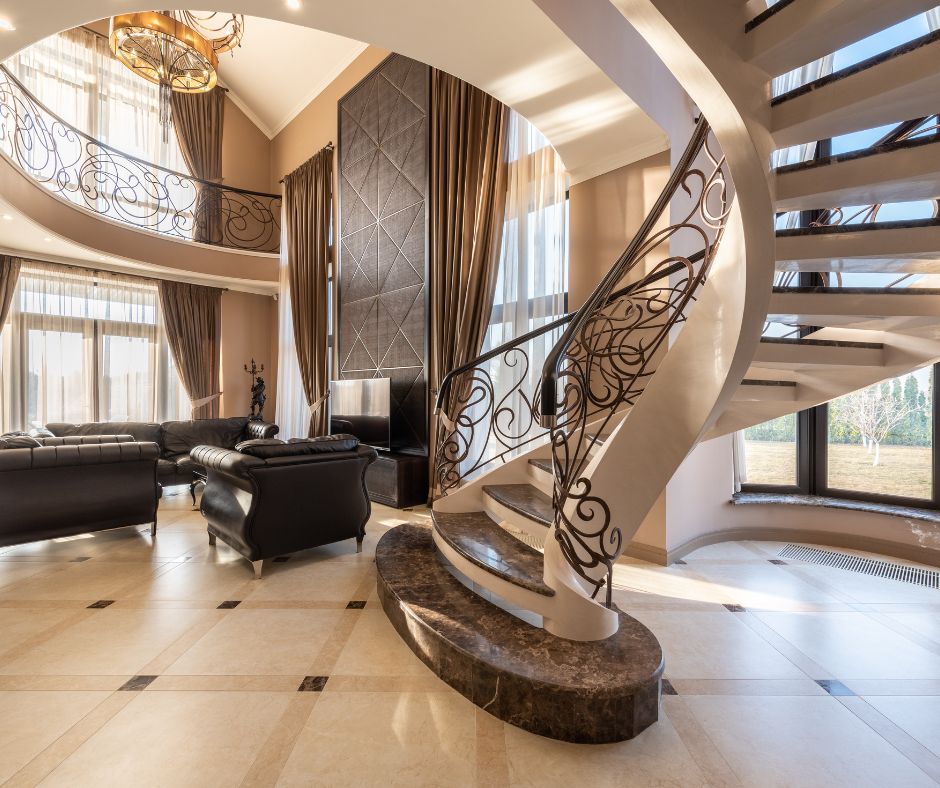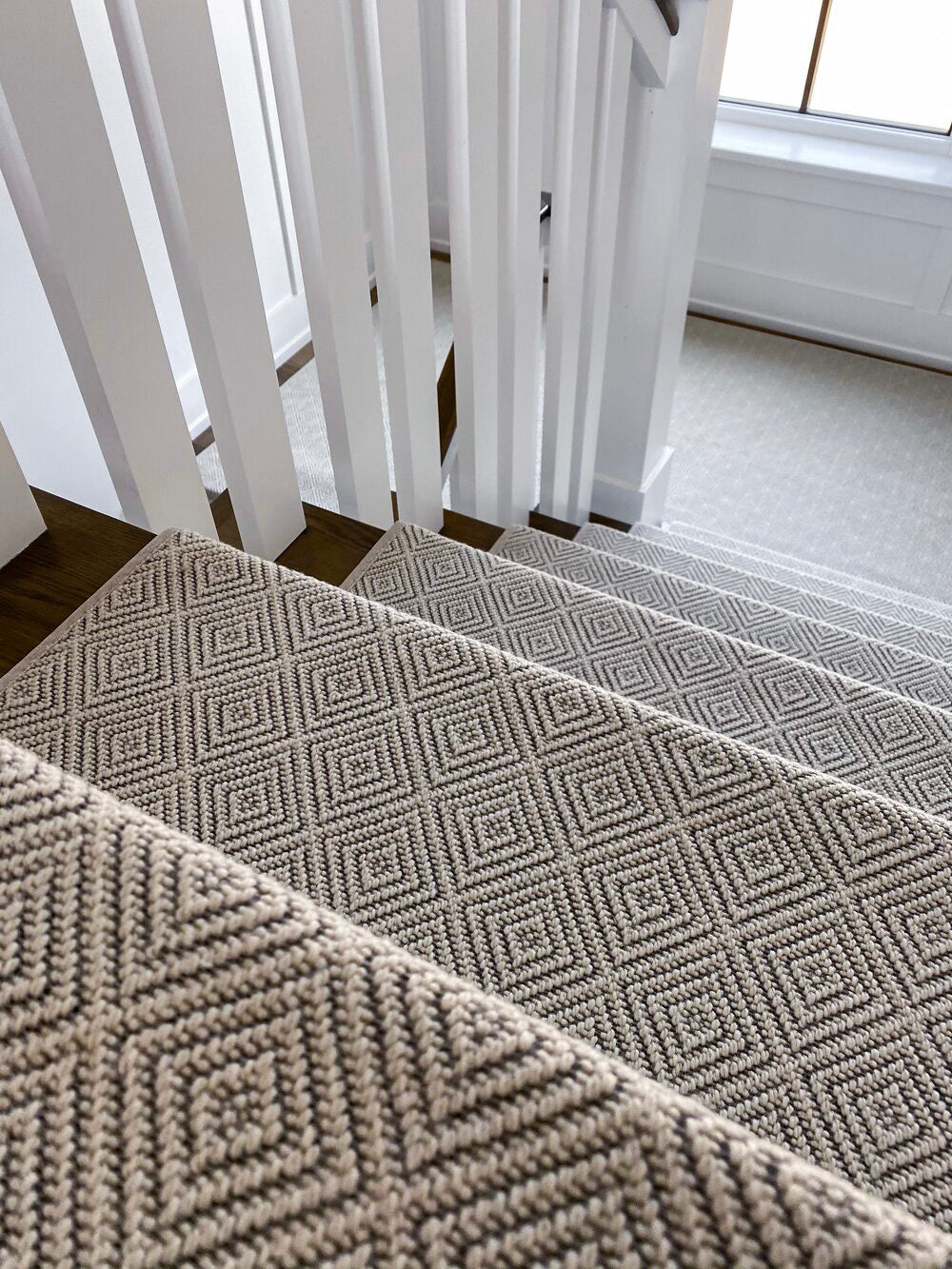Looking to add charm and function without taking up too much room? Types of spiral stairs refer to the various configurations and materials used to build space-saving staircases that wind around a central axis. This guide walks you through each option—so you can choose the best fit for your home’s style, layout, and safety needs.
You'll also learn how features like carpet stair treads improve comfort and reduce slips on slick surfaces. Whether you’re remodeling or building from scratch, understanding stair types helps you plan smarter and avoid costly mistakes. Let’s break down what works, what doesn’t, and how to get it right the first time.
7 Types of Spiral Staircases
Spiral staircases come in several styles, each designed to meet different needs for space, style, and safety. From classic wooden designs to sleek glass or metal options, the type you choose shapes both function and appearance.
1. Closed Shaft Spiral Staircase
This design features steps that curve tightly around a central pole, creating a compact structure. It's perfect for small spaces like apartments or duplexes where floor space is limited. The enclosed nature provides a sense of privacy and can make a room feel more intimate.
2. Open Spiral Staircase
Unlike the closed shaft, this type has an open center, allowing light to pass through and making the space feel larger. It's an excellent choice for homes with open floor plans or where you want to create an architectural focal point.
3. Vertical Axis Spiral Staircase
In this design, steps are attached to a vertical wall or beam instead of a central column, giving a minimalist and contemporary look. It's suitable for modern homes where a sleek appearance is desired.
4. Metal Spiral Staircases
Crafted from materials like steel or aluminum, metal spiral staircases are durable and versatile. They fit well in both indoor and outdoor settings and can complement industrial or modern aesthetics.
5. Wooden Spiral Staircases
Offering a warm and classic appeal, wooden spiral staircases are ideal for traditional or rustic interiors. They can be made from various woods like oak, maple, or mahogany, and often come in customizable kits for easy installation.
6. Glass Spiral Staircases
For a contemporary and airy feel, glass spiral staircases are a striking choice. They allow light to flow through, making spaces feel open and bright. However, they require careful maintenance to prevent slips and maintain clarity.
7. Outdoor Spiral Staircases
Designed to withstand the elements, outdoor spiral staircases are typically made from weather-resistant materials like galvanized steel or treated wood. They're perfect for connecting decks, balconies, or rooftop gardens.
Choosing the Right Type of Spiral Staircase for Your Home
Not all spiral staircases serve the same purpose. Some types are better suited for tight indoor spaces, while others shine in grand entryways or garden patios.
Ask yourself:
-
Is the staircase functional, decorative, or both?
-
Is it for daily use or occasional access?
-
Does your style lean more modern, traditional, or rustic?
Matching the staircase type to your home’s use and aesthetic is just as important as choosing the material.
Interior Design Tips Based on Spiral Stair Types
The type of spiral stairs you choose can dramatically shift a room’s feel.
-
Wooden Spiral Stairs: Pair with cozy textures like wool rugs, farmhouse furniture, and warm lighting.
-
Metal Spiral Stairs: Complement with sleek lines, neutral tones, and industrial decor.
-
Glass Spiral Stairs: Use minimal accents and natural light to keep the space airy and open.
These staircases aren’t just functional—they’re a core part of your design story.
Engineering Behind Spiral Staircase Types
Each type of spiral staircase requires different structural considerations.
-
Center Column Systems: Most common, with each tread connected to a single pole.
-
Cantilevered Designs: Steps extend outward from a wall or hidden structure, offering a floating look.
-
Helical Spiral Staircases: These resemble spiral stairs but lack a central pole and form a sweeping curve—more custom and often seen in luxury homes.
Knowing these distinctions can help when planning to build spiral stairs for your home.
Common Mistakes When Selecting Spiral Stair Types
Picking the wrong type of spiral stairs can lead to installation headaches or safety issues.
Avoid:
-
Ignoring Headroom Requirements: Spiral stairs can quickly violate building codes if not measured properly.
-
Choosing Aesthetic Over Function: That all-glass look may not work for families with kids or pets.
-
Skipping Safety Features: Narrow treads and missing handrails are common hazards.
Making an informed decision starts with knowing all your options—and how each one performs in real life.
Design Enhancements Based on Spiral Stair Types
After choosing your stair type, you can elevate the look with thoughtful add-ons:
-
Lighting: LED strips under each step or a pendant light above a glass spiral staircase.
-
Railing Designs: Curved iron railings add elegance to wood stairs; cable railings modernize metal stairs.
-
Custom Treads: Add Oak Valley’s carpet stair treads for warmth and safety—especially on slick metal or glass.
Every detail adds personality and function to your stairs.
Building Spiral Stairs for Your Home
When planning to build spiral stairs for your home, consider the following:
-
Space Availability: Ensure there's enough room for the staircase's diameter and height.
-
Material Choice: Select materials that match your home's aesthetic and meet durability requirements.
-
Building Codes: Check local regulations for staircase dimensions, handrail requirements, and safety standards.
-
Usage: Consider who will use the stairs. For households with children or elderly members, prioritize safety features like non-slip treads and sturdy handrails.
DIY kits are available for those looking to undertake the project themselves, but consulting with professionals can help maintain safety and compliance.
Pros and Cons of Spiral Staircases
Pros:
-
Space-Saving: Ideal for areas with limited space.
-
Aesthetic Appeal: Can serve as a design focal point.
-
Versatility: Suitable for both indoor and outdoor use.
Cons:
-
Navigation Difficulty: Can be challenging for some individuals to use.
-
Furniture Movement: Moving large items up or down can be problematic.
-
Safety Concerns: May not be ideal for households with young children or elderly members without proper safety features.
Steps to Success
Choosing the right spiral staircase involves balancing aesthetics, functionality, and safety. By understanding the different types and considering your home's specific needs, you can select a staircase that enhances your living space both visually and practically.
Ready to Step Up Your Stair Style?
Whether you're dreaming of a cozy wood spiral staircase or planning a modern metal design, we’re here to help you make the right call—safely, beautifully, and without the stress. Let’s talk treads, safety, and style. We’ll walk you through every step.
-
Website: https://oakvalleydesigns.com/
-
Phone: (706) 331-0315
-
Email: info@oakvalleydesigns.com
-
Address: 30 River Ct SW Bldg E Cartersville, Ga 30120




